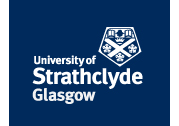Urals
Population: 20,436,000.
Biggest city: Yekaterinburg (formerly Sverdlovsk) (1,392,000)
Flying time from Moscow to Yekaterinburg (the biggest city): 2 hours.
Time difference from Moscow: +1-2 hours.
Urban population: 74%. Rural population: 26%.
Area: 824,000 square km (slightly larger than Turkey)
Density: 25 persons / sq. km.
Climate zones: Ranging from dry steppes in the far south to taiga forests
in the far north.
Socio-economic indicators (1999 Duma Vote) As the second most populous region of Russia, the Urals has a large Gross Domestic Product, based primarily on urban economic activity. The GDP per capita is also just above the national average, while the average monthly wage is slightly below average. Indicative of difficulties in the economy there, the proportion with wages paid in full is below the national average.
Privatization has not altered
the old Soviet-style industrial structure. The proportion of employees
in ex-state enterprises in the Urals is above the national average, while
the proportion in new private enterprises created is a quarter below the
national average.
Administrative divisions:
| Sverdlovsk Oblast(Pop.
4,667,800) Capital: Yekaterinburg (formerly Sverdlovsk) (1,392,000) |
Orenburg Oblast (Pop.
2,225,800) Capital: Orenburg (576,000) |
| Bashkortostan
Republic (Pop. 4,103,900) Capital: Ufa (1,097,000) |
Udmurt Republic (Pop.
1,635,700) Capital: Izhevsk (653,000) |
| Chelyabinsk Oblast(Pop.
3,675,400) Capital: Chelyabinsk (1,151,000) |
Kurgan Oblast (Pop.
1,104,700) Capital: Kurgan (368,000) |
| Perm Oblast (Pop.
2,996,800) Capital: Perm (1,100,000) |
Komi-Permyak Autonomous Okrug (Within Perm
Oblast, pop. 158,000) Capital: Kudymkar (33,000) |


